Celiac disease is a condition like a chameleon. The symptoms are very versatile and the number of unreported cases is high. About one in every hundred is affected. It can take years for the correct diagnosis to be made. If the disease is not detected in time, it leads to severe malnutrition with many secondary diseases such as osteoporosis, anemia, tooth enamel damage, muscle spasms, edemas and even cancer.

Definition
Celiac disease is a chronic disease. It breaks out after the consumption of the pathogenic substance gliadin, which is one of the components of gluten. Of course, gluten is only pathogenic if there is an intolerance. With the technical term, the disease is called “gluten-sensitive enteropathy”. Very specific types of protein from wheat, rye, triticale, barley, oats, spelt, einkorn, emmer and kamut lead to damage to the mucous membrane of the small intestine, called villous atrophy.
The surface of the small intestine is greatly increased by villi and crypts, so that it can come to an intimate contact with the chyme. This allows the nutrients to be optimally absorbed. In patients with celiac disease, incorrectly composed protein bodies are found in the innermost lining of the intestinal wall. Gliadin, a type of protein from the cereals, is bound to these. This either has a direct damaging effect or it leads to a defensive reaction against the gliadin-carrying body cells with subsequent damage to the intestinal mucosa. The villi regress strongly, making the absorption area for the nutrients much smaller.
The cereal proteins lose their pathogenic properties neither through cooking nor through enzymatic breakdown in the gastrointestinal tract. Genetic conditions favor the development of the disease. The white race is the main target of the disease, and prevalence differs widely from country to country. A study in the US found a prevalence of 1 case in 133 persons of the general population.1)Fasano A. et.al. Prevalence of celiac disease in at-risk and not-at-risk groups in the United States: a large multicenter study. Arch Intern Med. 2003 Feb 10;163(3):286-92. DOI: 10.1001/archinte.163.3.286 A UK study found a prevalence of 1 in 166.2) El-Hadi S, et.al. Unrecognised coeliac disease is common in healthcare students. Arch Dis Child. 2004 Sep;89(9):842. DOI: 10.1136/adc.2003.041459 In Australia it seems to be 1 in 70. It is very rare in Japan and sub-Saharan Africa.
The Clinical Presentation
The disease can occur at any age. There are two distinct peaks. One occurs in infancy, the other between the ages of 30 and 40. Girls and women are more often affected. Diagnosis is quicker in toddlers than in adults, because the pathogenic types of protein are usually introduced into the diet between the ages of 4 and 6 months in the form of cereal porridge, biscuits, crackers and bread.

In case of intolerance, the symptoms become visible after a few weeks or months. The toddler no longer thrives and there is no weight gain. Often it unlearns what has already been acquired. The thin arms and legs and the missing buttocks stand in striking contrast to the bloated belly. The stools are mushy, bulky and smelly. The face remains round for a long time. The skin color is pale.
What happened? The intestinal villi have largely disappeared. The size of the surface of a healthy intestine could be compared to a tennis court, that of a patient with untreated celiac disease to a table tennis table. This leads to severe deficiency symptoms because the nutrients such as protein, fat, carbohydrates, vitamins and minerals cannot be absorbed in the required amount.
Diagnosis in adults is more difficult. Often, he wanders from one examination to another, is treated for various diseases such as lactose intolerance, osteoporosis or anemia. The typical textbook picture of the disease usually only appears at a late stage. Silent celiac disease is also known, in which the course is symptom-free and there is still a change in the mucous membrane.
Diagnosis
The most important diagnostic measure is the direct examination of the intestinal mucosa. In the past a small metal capsule attached to a thin tube was swallowed in order to extract a tissue sample. Today an endoscopy is used to examine the appearance of the duodenum and obtain 4 to 8 samples for biopsy. A microscopic examination can determine whether there is damage to the mucous membrane or not. Immunological tests support the diagnosis. In case of disease, antibodies to gluten are found in the blood serum. Other deficiencies in the blood can also be detected, such as iron, hemoglobin, vitamin and mineral deficiencies. The diagnosis of celiac disease is then the sum of all the available information.
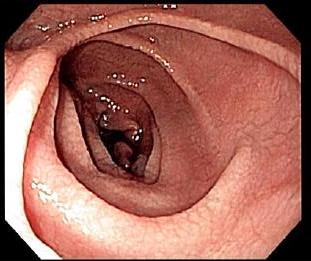
Treatment
Basically, the treatment consists in avoiding the substance recognized as harmful, and this for life. With a gluten-free diet, the mucous membrane of the small intestine gradually recovers and can then no longer be distinguished from a healthy one. However, in adults, recovery can take much longer than in children, who have a much higher rate of cell renewal.
It is difficult to avoid all foods containing gluten. For this reason, working groups have been formed in many countries that have meticulously asked the manufacturers for the exact formulations of many products. The results are summarized and continuously updated in thick manuals with many grocery lists, as the aim is to avoid even the tiniest traces of gluten.
There are gluten free oats on the market that are free from gliadin contamination, but they still contain avenin which can trigger an inflammatory response in some susceptible people. If you do not want to do without oats, a new biopsy should be done after three months of use. In case of doubt it is safer to avoid oats altogether.3)Oats and the gluten free diet. Coeliac Australia
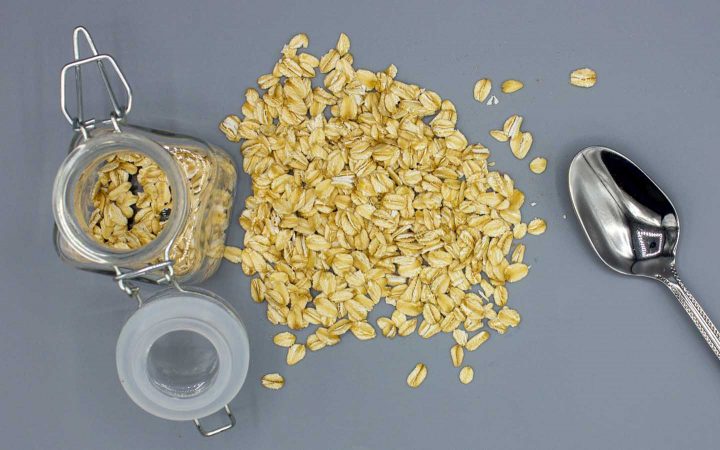
Traded gluten-free products are specially labeled with a crossed-out cereal ear. Just studying the ingredient list of a product does not help, because a compound ingredient does not have to be declared if less than 25% of it is contained in the final product. Gluten can also be added to products for technological reasons, such as a processing aid or as a carrier.
Celiac Societies
If celiac disease is diagnosed, contact with the local celiac society is established if desired. The affected person receives a manual with a precise description of the clinical picture and with many practical tips for cooking with gluten-free products. A list of restaurants, hotels and health resorts is enclosed that cook gluten-free if required. There are also many tips for dealing with authorities, because a gluten-free diet is expensive and time-consuming. That is why there are increased family allowances and tax allowances in many countries.
I have Celiac Disease – And What do You Have?
People with celiac disease are considered healthy when maintaining a gluten-free diet and completely normal in every respect. Of course, especially with children who would love to eat what other children eat, there are occasional grievances. Why he can’t bite into a tempting doughnut to his heart’s content? Why does he always have to take his special things to eat at a birthday party? The diagnosis of celiac disease for a child and his or her parents is certainly not a trivial matter. Parents, grandparents, acquaintances and friends shouldn’t feel sorry for the poor child all the time, but should encourage them, show them that celiac disease is sometimes an unpleasant thing, but nothing devastating.
Contacts
Celiac Disease Foundation (USA)
www.celiac.org
National Celiac Association
www.nationalceliac.org
Canadian Celiac Association
www.celiac.ca
Coeliac Australia
www.coeliac.org.au
Coeliac New Zealand
www.coeliac.org.nz
Coeliac UK
coeliac.org.uk
Recipes
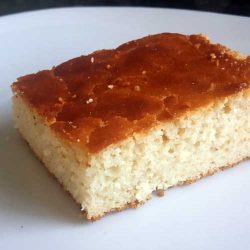
Rice Cake
Ingredients
- ⅔ cup brown rice
- ⅔ cup orange juice (juicing 4 large oranges)
- ⅓ cup honey
- 1 tbs dry yeast
Instructions
- Hydrate ⅔ cup brown rice for 12 hours. Makes about 1 cup of hydrated rice.
- Blend the ingredients for a few minutes.
- Grease a mold with oil, pour the dough and let it rise for 40 minutes to 1 hour depending on weather, until doubled in volume.
- Bake at medium heat for about 1 hour.

Chickpea Flour Pancake
Ingredients
- 1 banana
- 1 cup chickpea flour
- 2 Tbsp tapioca flour sweet
- 1 Tbsp honey
- ½ tsp salt
Instructions
- Blend everything with 1 cup of water.
- Pour the right amount into the skillet and spread with a spoon or spatula.
- Wait until golden and forming bubbles. Loose the pancake with the help of a spatula to flip it over.
- Let the other side brown.
- Use your preferred filling. Serve still hot.
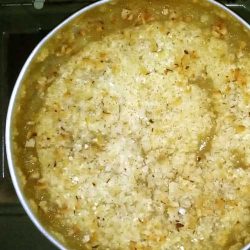
Cassava Cake
Ingredients
- 1 lbs cassava root (½ kg)
- ½ cup honey
- 1 small coconut
- 1 pinch of salt
Instructions
- Grate raw cassava or crush in the food processor.
- Blend the coconut with 1 cup of water.
- Mix all the ingredients, adding water if necessary to reach the consistency of cake batter. Taste the dough to check appropriate sweetness.
- Grease a mold and spread the dough to a thickness of 1-2 inch. (3-5 cm)
- Bake on medium heat until golden.
Notes
Corn Bread
Ingredients
- 2 cups corn flour
- 1 cup tapioca flour sweet
- 4 Tbsp olive oil
- 1 Tbsp honey or brown sugar
- 1 Tbsp dry yeast
- ½ tsp salt
- sunflower seeds for decoration
Instructions
- Mix all dry ingredients.
- Add 1 cup of lukewarm water little by little and stir until you get a liquid and homogeneous dough.
- Pour the dough into a greased pan.
- Let it rise for about 1 hour or until it doubles in volume.
- Preheat oven and bake over medium heat for about 1 hour.
- Allow it to cool down for a few minutes and remove from pan in order for the bread not to sweat.
- Wrap in a cloth to cool.
Notes
Recipes with Oats
Like we stated, not all with celiac disease can use even gluten free oats. If you have made a test that you can use them, here are some interesting recipes that can serve you.
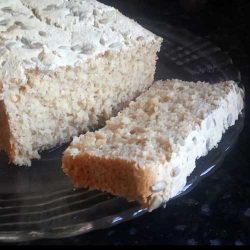
Oat Bread
Ingredients
- 2 cups oat flour
- 1 cup tapioca flour sweet
- 4 Tbsp olive oil
- 1 Tbsp honey or brown sugar
- 1 Tbsp dry yeast
- ½ tsp salt
- sunflower seeds for decoration
Instructions
- Mix all dry ingredients.
- Add 1 cup of lukewarm water little by little and stir until you get a liquid and homogeneous dough.
- Pour the dough into a greased pan.
- Let it rise for about 1 hour or until it doubles in volume.
- Preheat oven and bake over medium heat for about 1 hour.
- Allow it to cool down for a few minutes and remove from pan in order for the bread not to sweat.
- Wrap in a cloth to cool.
Notes
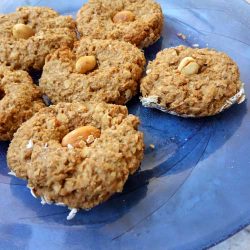
Peanut Oat Cookies
Ingredients
- 3 cups oats
- 1 pinch of salt
- 1/3 cup honey
- 1 cup roasted peanuts
Instructions
- Beat the peanuts in a blender with a little water to form a cream.
- Pour into a bowl and put the remaining ingredients, mix well.
- Make cookies in the format you want.
- Bake in moderate heat until golden brown.
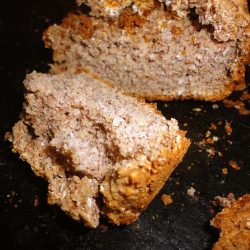
Coconut Rice Bread
Ingredients
- 1 cup coconut flour
- 1 cup brown rice flour
- 1 Tbsp dry yeast
- 1 cup rolled oats
- 1/2 cup coconut flakes
- 1 tsp salt
Instructions
- Mix the flours well with the yeast.
- Add salt and mix again.
- Add the rolled oats and mix again.
- Add 1½ cups of water and mix more until it forms a very homogeneous mass.
- Put the dough in a form.
- Bake for 1 hour at 390°F (200ºC).
- Turn off the oven and let it cool down.
Notes
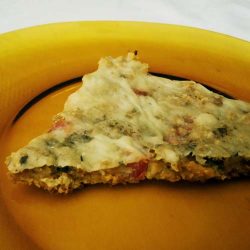
Oat Pizza
Ingredients
- 3 cups fine rolled oats
- 1 tsp salt
- 1 chopped onion
- 2 cloves of garlic
- 2 chopped tomatoes
- Oregano and parsley
- 6 chopped olives
- Sesame and sunflour for decoration
Instructions
- Put all the ingredients in a container and mix everything, adding water until forming a dough.
- Place on a pizza sheet.
- Decorate with oregano, sesame and sunflower. If you like, top with vegan cheese.
- Bake over medium heat until golden.

Stay Always Up to Date
Sign up to our newsletter and stay always informed with news and tips around your health.

Esther Neumann studied Nutrition at the University of Vienna. Since then she served as an author for the health magazine “Leben und Gesundheit” and conducted health lectures in various locations of Austria.
References
| ↑1 | Fasano A. et.al. Prevalence of celiac disease in at-risk and not-at-risk groups in the United States: a large multicenter study. Arch Intern Med. 2003 Feb 10;163(3):286-92. DOI: 10.1001/archinte.163.3.286 |
|---|---|
| ↑2 | El-Hadi S, et.al. Unrecognised coeliac disease is common in healthcare students. Arch Dis Child. 2004 Sep;89(9):842. DOI: 10.1136/adc.2003.041459 |
| ↑3 | Oats and the gluten free diet. Coeliac Australia |
Leave a Reply